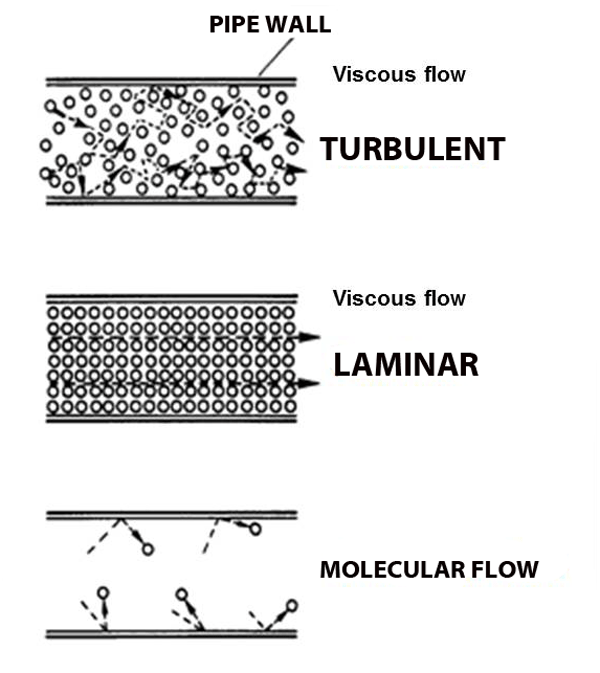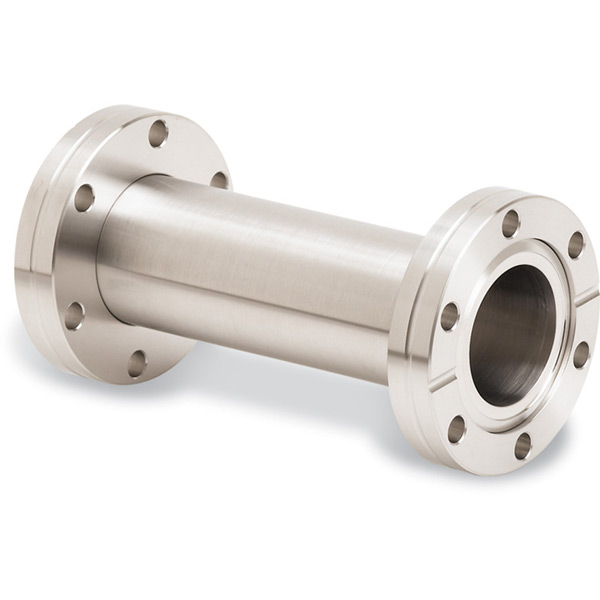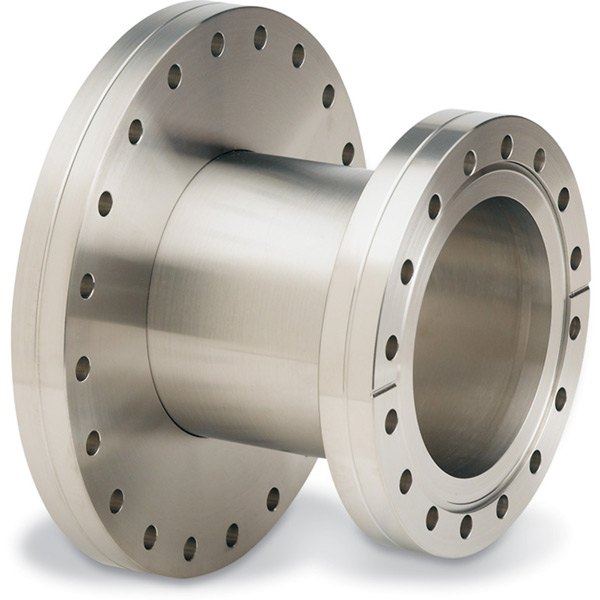let's start zoomed out and oversimplified:
Atoms:
Atoms, totally a thing! they're small. really small. a million of them fit across a single human hair. tiny, but they still take up space.
they often like to group up with other atoms to form molecules.
Gasses:
Hey so gasses exist. –you're breathing some right now.
what are gasses made of? molecules. Usually as a mix of different molecule types. Air is a mix of over ten types (mostly nitrogen and oxygen)! People work very hard to collect gasses that aren't mixed.
what are those gas molecules doing? mostly just bouncing around. –off each other, off the walls
how fast are they moving? fast. really fast. usually over a thousand miles per hour (you are being pelted by molecules right now).
the speed of an individual molecule depends on its temperature and its mass: cold things fly slower, heavy things fly slower.
but that speed is just for individual molecules; the gas as a whole has no great speed or direction because the molecules bounce off each other randomly in every possible direction.
how many molecules are in any given space? a lot! the room you're sitting in has about a gazillion gas molecules in it.
BUT: the number of molecules in a room depends on the pressure of the gas in the room: fewer molecules = lower pressure.
Gas Pressure:
When a gas molecule bounces off of something it pushes that something. If that something is another gas molecule that other molecule goes flying off. If that something is much bigger, for example a metal box, the molecule will push on the box just the same, but the box will hardly budge. What happens when I add more molecules to the box? all of those little bounces add up. That's pressure: the push from all the molecules. Add enough molecules and the pressure will rise so high that the box might pop!
What happens if we remove, instead of add, molecules? Vacuum.
Vacuum:
When the pressure in the box is lower than the air around us, we call it a relative vacuum.
When there are absolutely no molecules whatsoever in a space, we call it a perfect vacuum.
A perfect vacuum never happens. All vacuum chambers leak. And even in the furthest reaches of space, a stray molecule here and there flies past.
and now getting into nitty gritty details and definitions:
mean free path: the average distance that a gas molecule can travel before colliding with another gas molecule.
as pressure drops, mean free path increases, because there are less molecules to run into. this effects the behavior of gasses.
Behaviors of gasses:
Viscous flow:
Under normal atmospheric conditions-- gas molecules are constantly running into each other (short mean free path) and bouncing off.
In fact, when you blow out a candle it's not the molecules from your lungs that put out the flame, there are too many air molecules in the way; your lung-air molecules merely knock forward the air molecules in front of your mouth, which knock forward the air molecules above the cake, which in turn knock the air molecules in the flame away from the wick, taking their heat with them, and extinguishing the flame. This domino-chain like behavior is called viscous flow, and it's what we're used to.
But what happens when the pressure gets so low that molecules hardly run into each other? Molecular flow.
Molecular Flow:
When a molecule is more likely to hit a chamber wall than it is to hit another molecule the gas starts behaving in strange ways: wind does not blow and pumps cannot suck. We call this behavior molecular flow (see figure above).
Imagine the world's largest air hockey table, with a few pucks zipping about. Even if I manage to knock one puck, it is unlikely to hit any other pucks on it's way to the goal. That is molecular flow. Wind does not blow and pumps cannot suck because there are not enough molecules around for domino-chain effects to occur (like blowing out a candle).
Now, onto the machines that care so much about gasses and their behaviors: Vacuum chambers
Vacuum Chambers:
The Chamber itself: just a box for holding nothing.
or a sphere... holes to attach stuff.
Pumping:
So if a pump can't pull air after gasses enter molecular flow, how can pressure be dropped any lower? If the pumps don't suck, what do they do? They trap. Like the goal on an air hockey table traps the puck when it flies in.
So how likely is a molecule to fly into a pump-trap? That depends on how big the pipe is leading to the pump.
Conductance:
Molecules will fly through only as fast as the tube allows. A long/narrow pipe restricts that flow more than a wide/short pipe. That rate of flow is called the tube's conductance; the wide/short pipe has the higher conductance of the two.
Sometimes we get stuck using a long narrow pipe, slowing down our pumping... But slow pump bad, fast pump good! so what can we do?
Attach a bigger pump?? Not gonna work in molecular flow; pumps don't suck, they just trap. so what can we do?!
Sadly, nothing. =/ The pump will only ever remove molecules as fast as they naturally fly through the smallest/longest link in the chain of tubes, the one with the lowest conductance; and even though my pump could theoretically suck a bazillion liters of gas per second, that only works in viscous flow, and means nothing in molecular flow.
And besides, that pump that can pump so very much won't even work under viscous flow; it might even break. (too much detail?)
different pumps for different pressures:
When we want to get to really low pressures (which, at SLAC, is most of the time) we use layered tiers of pumping (Fun Fact: for similar reasons we have to use layered tiers of pressure gauges as well)
for more details on this, see the confluence page dedicated to vacuum pumps. and for that matter, the one on gauges too.
Pressure, revisited: this time it's chambers.
Partial pressure:
So gasses mix. How does mixing gasses change pressure? The pressures add up. For example:
In the mixed chamber the oxygen and nitrogen are still contributing the same pressures they had when they were separate. Those contributing pressures are called partial pressures. Oxygen's partial pressure in the mixed chamber is 2 units of pressure.
partial pressure
all vacuum chambers leak
contamination
molecules sticking to walls intermittently
main culprits:
water - from moisture in the air
hydrocarbons (oils, plastics)
how to defeat contamination
prevent it!
use gloves, change them frequently
clean anything going inside the vacuum
opening the chamber? pump nitrogen into it - prevents water from getting in
nitrogen gas has no water vapor, unlike air.
bake it
making the chamber hot will get help those sticky molecules (water and oil) move along faster
Units of pressure, log scales








